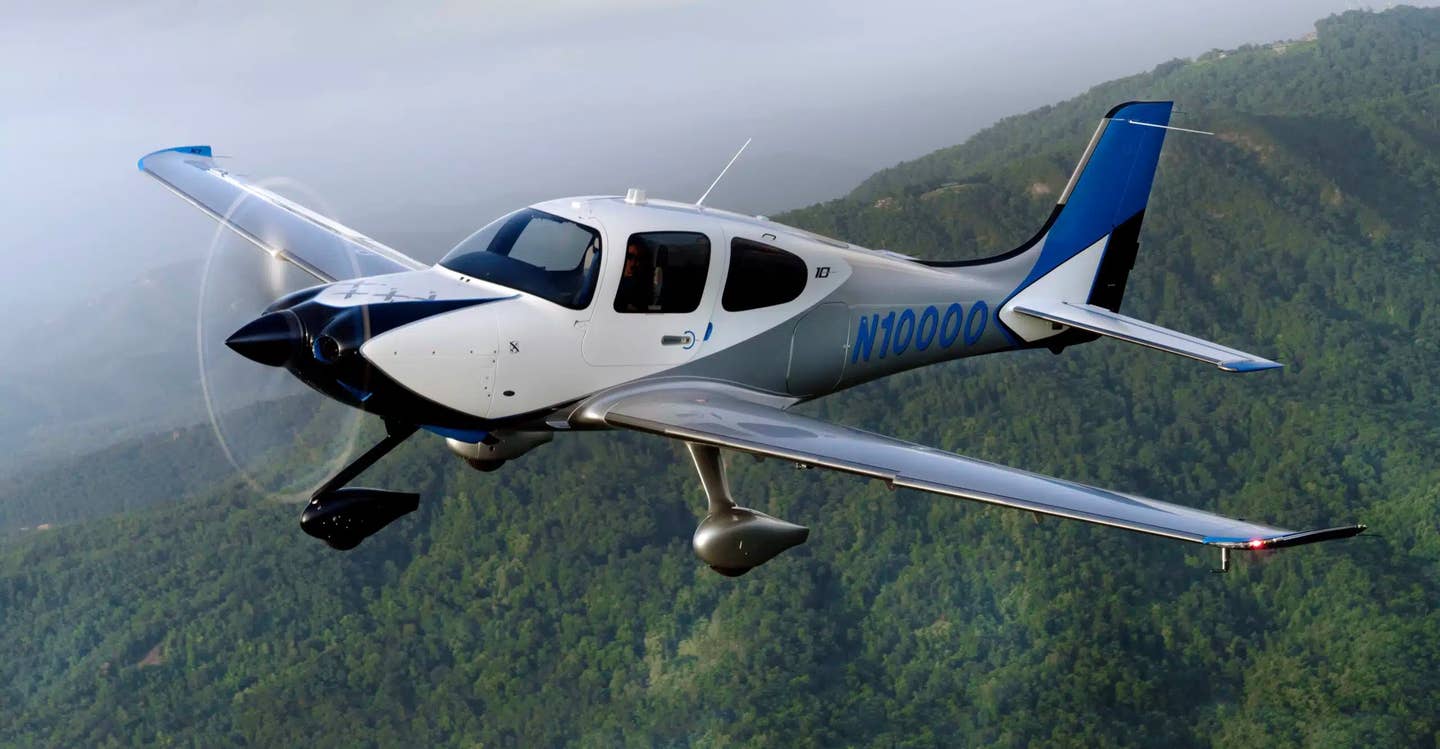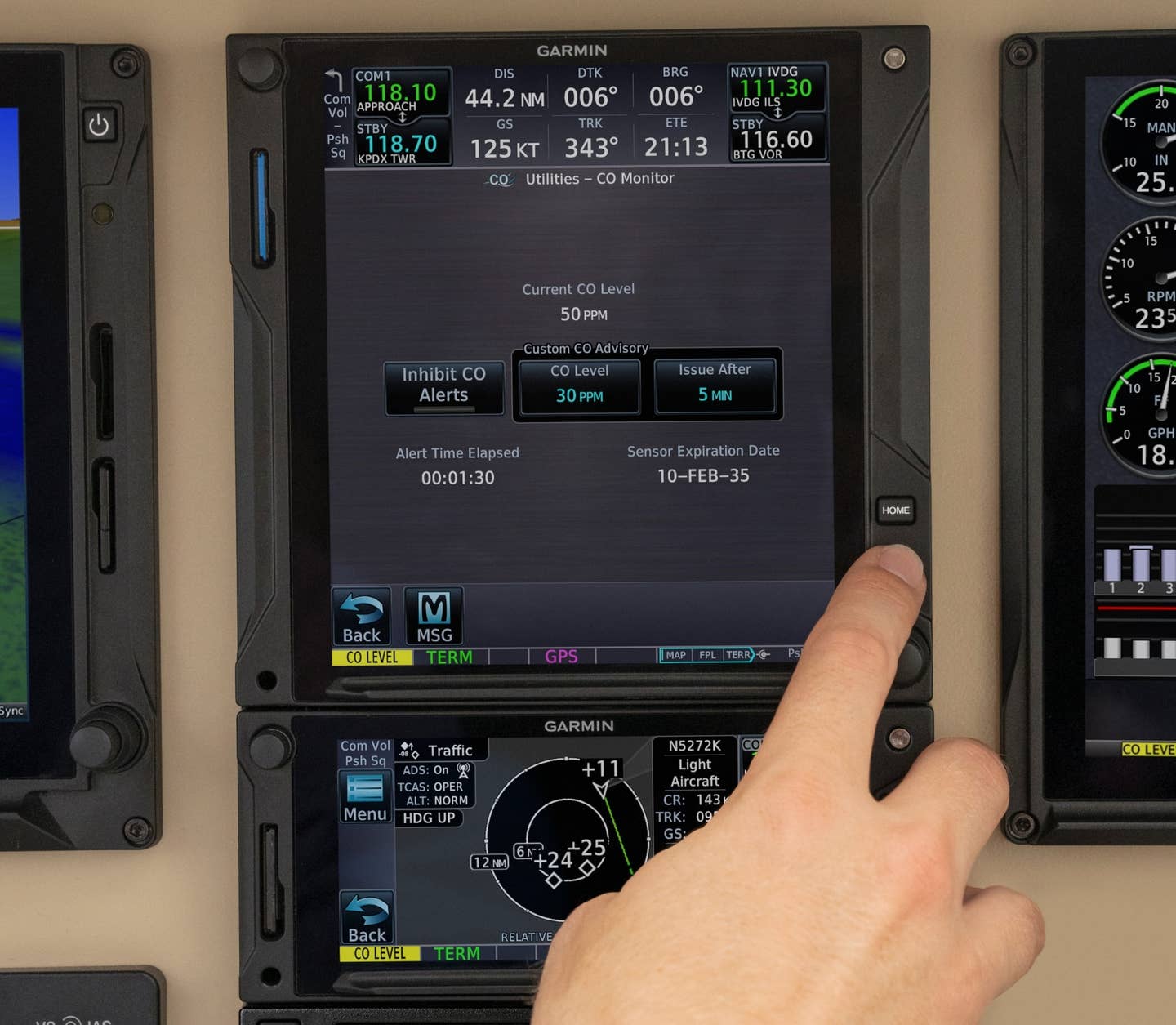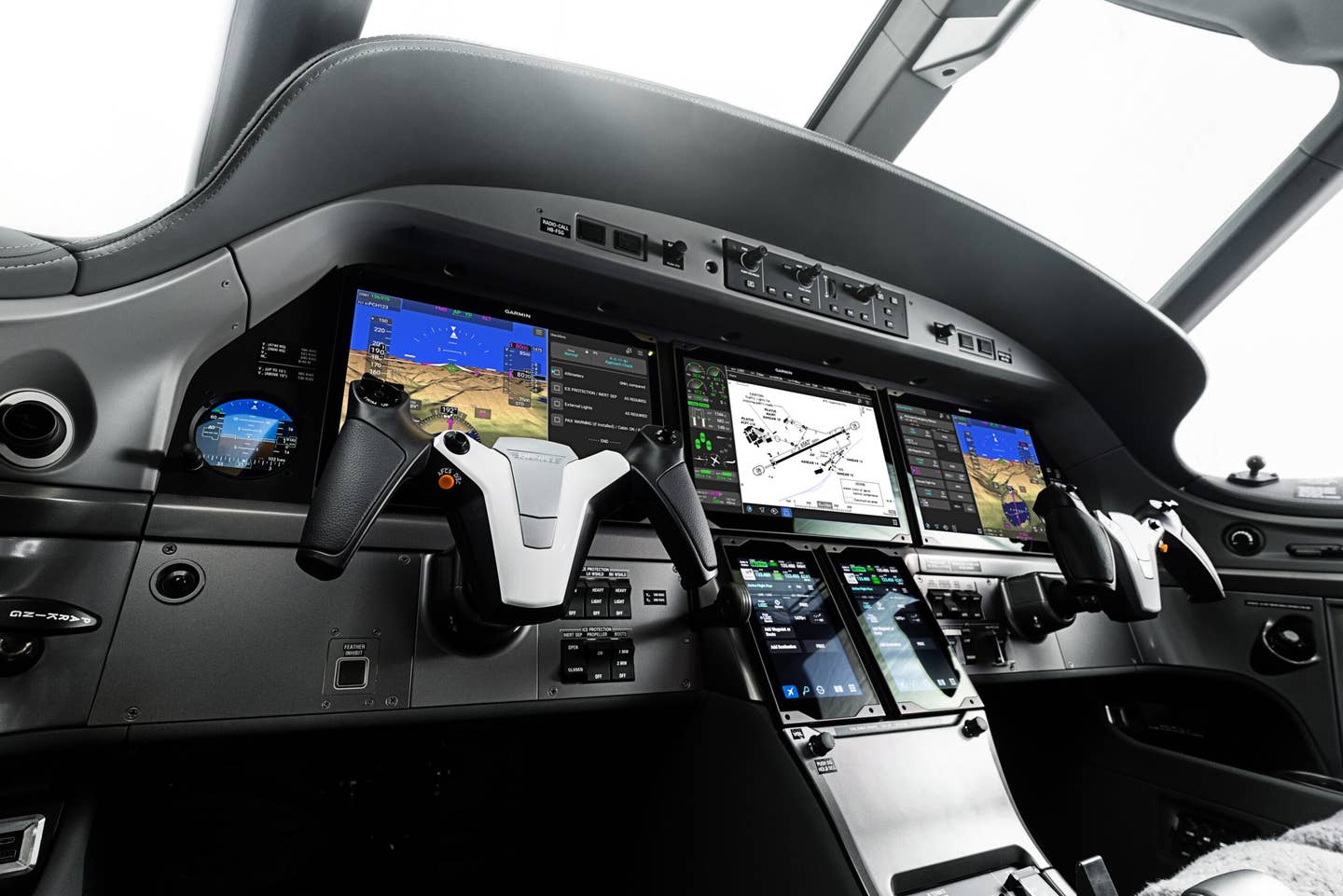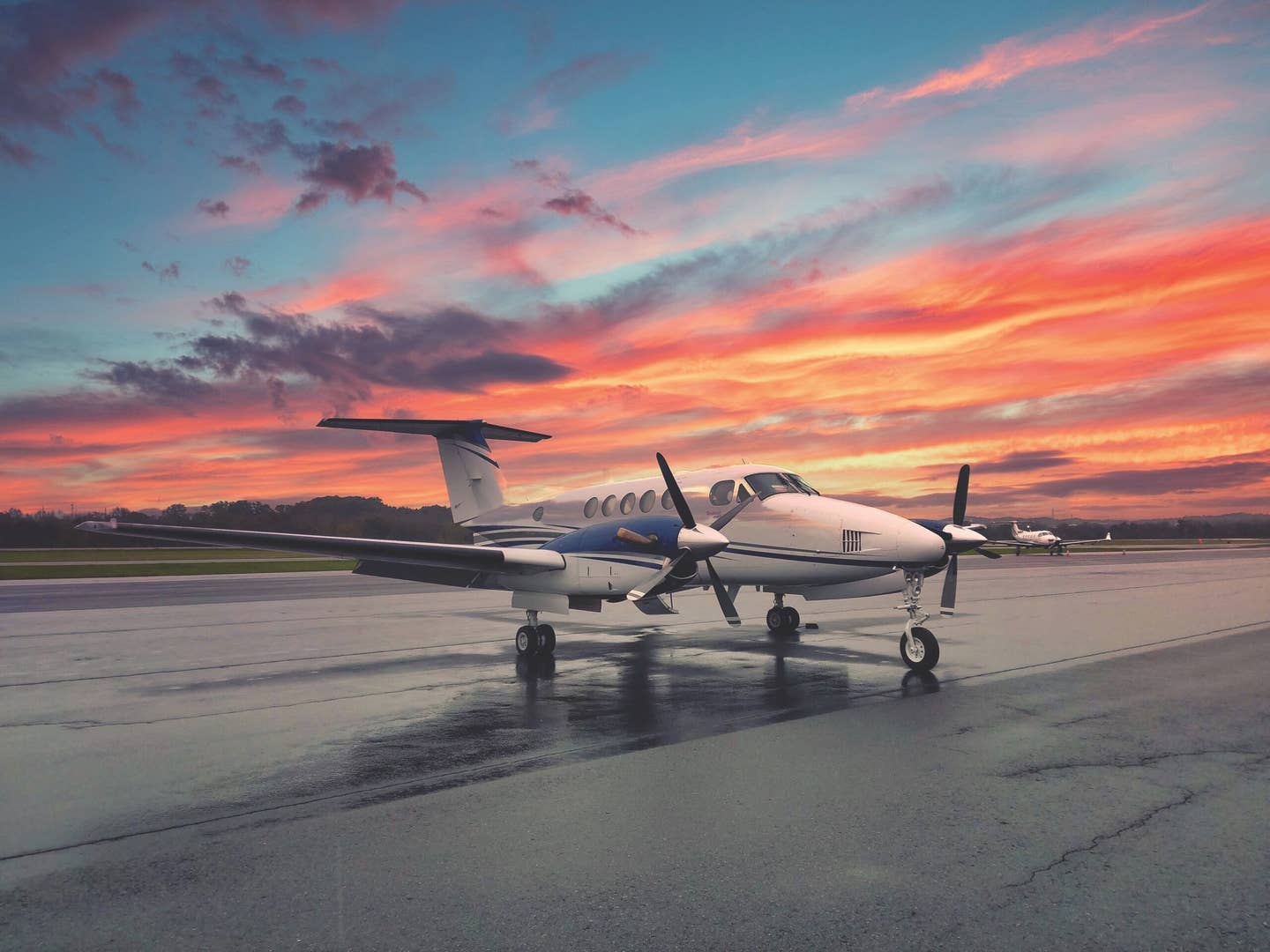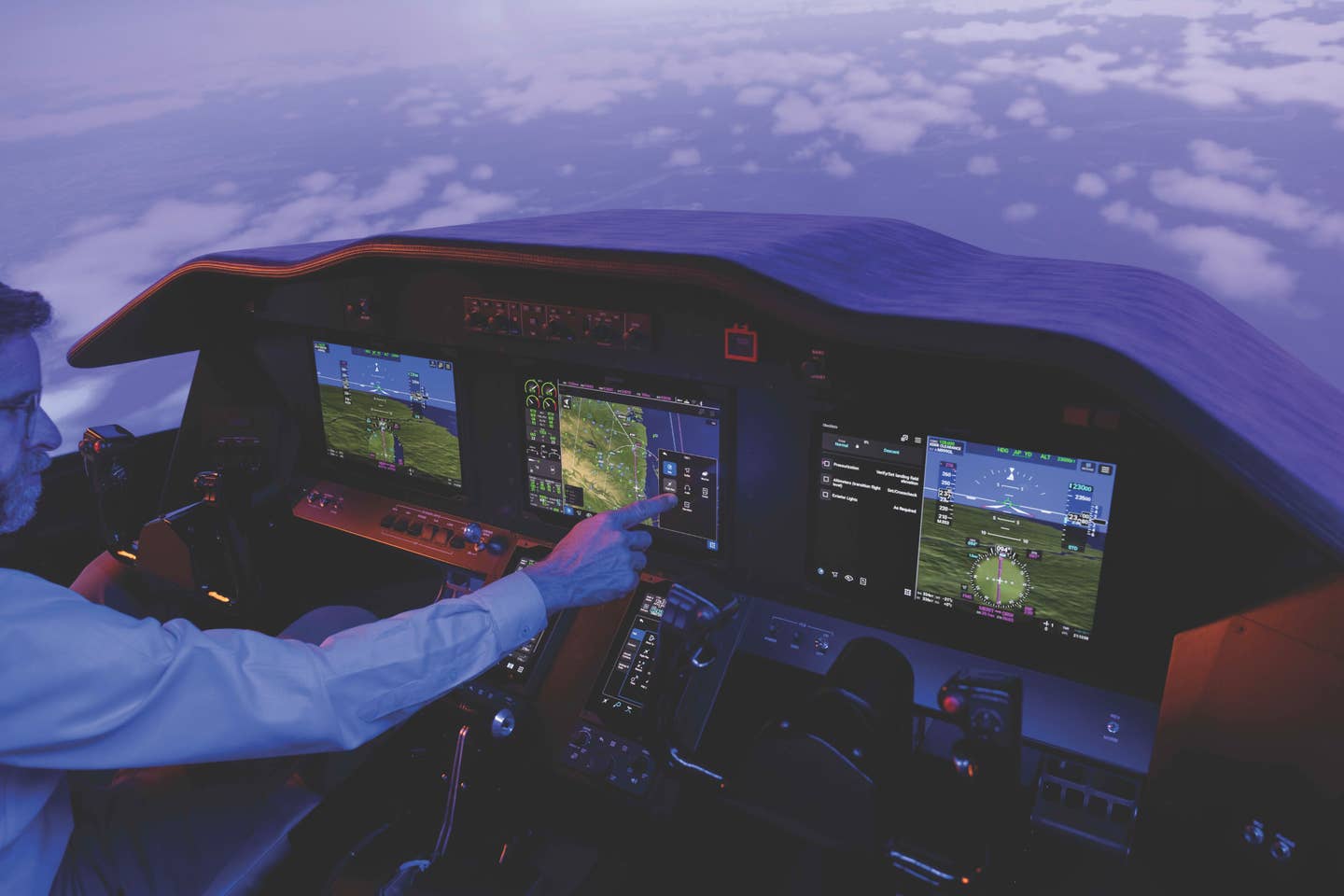
One sunny July afternoon, a private pilot was returning to his home base from a lunch run to a nearby airport. He was flying a 1946 Luscombe, a well-worn classic but a new airplane to him. As he descended along the mountains skirting a populated area, the unthinkable happened — the engine quit. At his altitude and position, the pilot had very little time to react and very few choices. Unable to restart the engine, he selected a small clearing up against the mountains. If there hadn't been a rocky berm at the approach end of the field, or if he'd had a couple of feet more altitude, or if the field had been just a tad longer — if, if, if, if — he would have made it. But Lady Luck wasn't his copilot that day. The Luscombe hit the berm and landed hard on its nose, causing the pilot to sustain severe injuries. Although the aircraft had seat belts, unfortunately, it didn't have shoulder harnesses. Had they been installed, the pilot's injuries probably would have been much less severe. The moral of the story: Make sure you have the best restraint system you can afford, and then inspect, maintain and use it properly.
WHY BUCKLE UP?
In 1912, the need for seat belts was dramatically demonstrated by famed aviatrix Harriet Quimby, who was killed when she was ejected from her Bleriot aircraft along with her passenger when her plane pitched forward suddenly and plunged to the ground during an aerial demonstration. The first licensed woman pilot in the United States, Quimby was the darling of America, and her loss in such a spectacular fashion shocked the fledgling aviation community. Experts have debated the cause of her accident for years, but no one argues that seat belts would have given Quimby and her passenger a better chance of survival.
Lap belts and shoulder harnesses arrived on the aviation scene early. Military pilots used them during World War I, mainly to keep themselves secure in their seats rather than to guard against injury during a crash. During the 1910s to the early 1920s, many accidents, including Quimby's, hastened the use of seat belts. By 1928, all aircraft were required to have them. It wasn't until 1969 that the FAA mandated that newly type-certificated GA aircraft have seat belts and shoulder harnesses for each person. This proved to be false progress because manufacturers could and did produce aircraft without shoulder harnesses under their pre-1969 type certificates.
Real progress came when the FAA required the installation of shoulder harnesses for the front seats in all newly manufactured GA airplanes from 1978 onward. Aircraft manufactured before 1978 were exempt. Many pilots of these aircraft, however, have added shoulder harnesses for the front seats thanks to readily available supplemental type certificates (STCs), the FAA's loosening of rules for installing them (FAA Advisory Circular 23-17B) and many pilots' well-developed survival instincts. In 1985, the FAA required shoulder harnesses for all seats of GA airplanes manufactured after 1986.
In the early 2000s, the emergence of seat-belt airbags in general aviation brought aircraft safety equipment into the modern world.
STATISTICS DON'T LIE
The collection of crash data and survival statistics rests mostly in the hands of the NTSB and FAA. After all, they are the ones who investigate the accidents. While restraint system manufacturers get some feedback, it's often anecdotal. "Fortunately, there aren't many accidents, so we don't hear from people that often," said Scott McPhillips, vice president of Hooker Harness, a custom restraint system manufacturer, "but I've had pilots come up to me at a show and say, 'It worked.'"
Seat belts generally get the respect they've earned, but shoulder harnesses tend to be dismissed as unnecessary. In a 1985 safety study, the NTSB found that, in crashes where at least one occupant was fatally or seriously injured, shoulder harnesses were available for only 40 percent of the occupants and a mere 40 percent of those people actually used them. That means just 16 percent of the occupants took advantage of this critical safety equipment. Furthermore, the study estimated that 20 percent of those who perished could have survived if they had worn shoulder harnesses and a significant 88 percent of seriously injured persons would have had less serious injuries if they had used them.
In a 2011 safety study (SS-11/01), the NTSB found that the risk of fatal or serious injury with the occupant wearing a seat belt alone was 50 percent higher than with the occupant wearing a seat belt and a shoulder harness. So why don't people wear them? Complaints include that they're uncomfortable, mess up your clothes or cause injury. Even if that's true, tell naysayers those excuses are inadequate, please. Illustrate your facts with a story like this one: During the landing rollout, the pilot of a Cessna 140 jammed on the brakes a little too enthusiastically trying to make the turnoff. The little Cessna's tail went up and over and the airplane came to rest on its back. Because he was using his shoulder harness, the pilot walked away.
The seat belt manufacturing process is carefully quality-controlled and the equipment used to manufacture and assemble the units is highly precise and reliable in producing identical components, all critical elements of FAA approval.
PROTECT AND SERVE
The FAA requires that your certified aircraft be designed to protect each occupant during an emergency landing. Seat belts and shoulder harnesses do their best to keep occupants safe — but there are limits. For longitudinal (forward) decelerations, the critical load is established at 9 G's or a 1,500-pound load for general aviation aircraft. The human body is capable of withstanding considerably higher G-loads, depending upon the direction in of the G's, the number of G's and how long they last. Crashes of military and agricultural aircraft have shown that many occupants can survive G-loads up to 20 to 25 G's for brief periods of time if they are wearing a suitable restraint system. Of course, some accidents are simply not survivable.
For certified aircraft, restraint systems must be manufactured to high standards to be installed in your aircraft. If they're not original equipment manufacturer (OEM) products, they must be FAA-approved. If in doubt, ask your mechanic before you buy.
Owners of experimental aircraft don't have to use FAA-approved restraint systems and have much more leeway in how they're installed. However, the ultimate standard is the same for all aircraft — occupant safety.
INSPECT YOUR SEAT BELTS
Like many pilots, I didn't give restraint systems much attention until I bought a 1970s-era sailplane. The seat belts and shoulder harnesses were the originals, making them more than 25 years old. The sailplane had been outside all of its life, including stints in parched Nevada and frozen Minnesota. Nowhere in the logbooks was there an entry that the restraint systems had been inspected, much less rewebbed or replaced. My mechanic took one look at the UV-ravaged system and said, "You are going to replace these, aren't you?" Well, I hadn't planned on it, but I did. A few months later there was a mishap in the sailplane and neither the pilot nor his passenger was injured.
So, how about you? Do you know the condition of your restraint systems? If not, here's the drill:
First, check your logbooks to see if they have ever been inspected or replaced. Even if they have, inspect them yourself using the checklist found in FAA Advisory Circular 43.13-2B, Chapter 9. Here's an abbreviated version:
- Inspect stitching on webbing for broken or missing stitches.
- Inspect webbing for fraying, fading or cuts.
- Ensure that required identification tags are present and legible on each belt assembly.
- If so equipped, check the harness post on the lap belt to make sure the nylon bushing or grommet is present and functional.
- Check the belt buckle for latch and release functions.
- Check the retractors to ensure that locking mechanisms engage when webbing is positioned at the normal operating length. Inertia reels should lock when the webbing is accelerated quickly out of the reel. Automatic locking retractors should lock at approximately one-inch increments as the webbing retracts back into the reel.
- Inspect buckles, connectors and fittings for corrosion, cracks or other damage.
- Check mounting hardware for security and ensure that airframe attachment of end fittings self-align and do not bind.
- Inspect quick-release end fittings for cotter pins.
- If equipped with manual locking inertia reel, check for proper operation and condition.
- If your restraint systems flunk any of the above items, they will not pass a condition inspection at annual, and you must repair or replace them. If well-maintained, a restraint system can last a long time. Still, many mechanics recommend replacement at 10 years to be on the safe side.
GET SEAT BELT SAVVY
You've examined your restraint systems, and you've found they don't meet the inspection criteria, or you want to add shoulder harnesses or upgrade your belts. Good news: You have basically three choices for a range of prices. 1) Reweb the restraint systems. 2) Replace your restraint systems with an OEM system. 3) Upgrade your systems.
There are three types of restraint systems that include shoulder harnesses: The three-point single diagonal; the four-point dual-belt system with one belt passing over each of the occupant's shoulders with the upper ends attached at two places behind each shoulder (H-type) or at one place behind the occupant's head after the belts join together in a Y, hence the name Y-type; and the five-point harness that adds a negative-G strap or crotch strap. If you want to shell out the extra bucks, you can purchase an inertia reel harness that locks and secures you during a crash but allows you to move more freely in your seat — a real benefit on longer flights.
A three-point harness works well if the deceleration during a crash is in the forward direction. During side decelerations or tumbling, however, you can slip out and away from the diagonal strap even if you are tightly strapped in. A four-point harness is much better at protecting you during both types of decelerations. A five-point harness prevents you from sliding under the belt in rapid decelerations and secures you when you fly aerobatics that include negative G's. Most restraint systems lock with either a push button, lift lever or rotary lock. For high-G maneuvers in aerobatic planes, a ratchet-style lock cinches you in super tight.
Although you may never fly aerobatics, airshow pilots know the value of using the right restraint system. Ask pilot Frank Donnelly, whose rudder jammed in his 1946 Swick-T Taylorcraft during an airshow routine. Taildragger pilots know this is not a happy situation, and indeed, on landing, Donnelly departed the runway into soft dirt and went up and over. Wearing a five-point aerobatic harness, he emerged from the upside-down aircraft unhurt. "Without the five-point harness," Donnelly said, "I would have hit my head and gotten the stick in my stomach."
If you own certain GA aircraft, you can opt for airbag seat belts from AmSafe. For you techies, here's a blow-by-blow description of how they work: An electronic module (EMA) — one per two seat-belt airbag systems — senses a 9 G deceleration event on the longitudinal axis at 45 milliseconds time pulse or longer. If the threshold trigger is reached, then the EMA releases a voltage to the inflator bottle (one per seat-belt airbag usually), which triggers the release of the charge up the inflator hose to the airbag from the lap or shoulder harness (depending on configuration) providing head and torso protection. Entire deployment timeline is less than 50 milliseconds, and the seat-belt airbag system stays inflated for three to five seconds before entire deflation. Pretty cool, huh?
But what about their effectiveness? In the 2011 study cited previously, the NTSB concludes "that aviation airbags can mitigate occupant injuries in severe but survivable crashes in which the principal direction is longitudinal." More research is needed to determine how the overall performance of seat-belt airbags compares to that of traditional restraint systems.
Lift-lever-style locks are widely used among airliners and general aviation aircraft. The lift-to-release function is reliable for keeping pilots and passengers safe; just be careful that your headset cord doesn't get caught under it and pull it open.
SHOP AROUND
Cost is always a factor, but restraint systems are widely available from many aircraft parts suppliers and can be surprisingly reasonable. Where can you buy them? Surf the Internet or ask your pilot buddies or your mechanic. The following base prices give you a general idea, but for firm numbers, check the suppliers directly.
Because Cessna 172s are so common, let's take a look at the options for them. Checking around, you'll find rewebbing your existing three-point system is the most affordable, ranging from about $105 to $123 for each seat at Aviation Safety Products. To replace a three-point system, look for OEM systems for about $294 a seat at Aircraft Spruce and Specialty Co. If you have a three-point system, consider upgrading to a four-point version that provides better protection. Sure, it will cost you a few more bucks, but you'll be glad you did if you're involved in an accident. New FAA-approved systems for the venerable C172 go for approximately $175 a seat from Wag-Aero. Inertia reels up the invoice considerably to approximately $1,300 to $1,350 from BAS for two seats—a one-seat system is not available. Want a custom set? You'll be in the $235 zone per seat from Hooker Harness. If you want airbags for your C172, you'll have to put out a whopping $4,556 for pilot and copilot seats from AmSafe.
If you have a four-place aircraft equipped only with lap belts, and you're low on cash, consider Hooker Harness' Quickie shoulder harnesses for a mere $60 each. With these, there is no installation cost or paperwork. Caveat: These attach to the rear seat belts, making the back seat unusable.
Don't forget to make sure your restraint systems are correctly installed. Remember Harrison Ford's accident in his Ryan aircraft? The NTSB concluded that his injuries would probably have been less severe if his shoulder harness had been properly installed.
SEAT BELTS SAVE LIVES
As PIC, the FAA requires you (CFR 91.105) to brief your passengers about how to fasten and unfasten their restraint systems before you take off. You must also notify all passengers to fasten their safety belts and shoulder harnesses before you taxi, take off or land. Interestingly, the FAA doesn't saddle you with the responsibility for the passengers actually using the restraint systems. However, take the high road and insist they buckle up. If you're invited to fly in an aircraft without shoulder harnesses, pass on the ride — anything can happen to anyone at any time.
Make sure your mechanic checks your restraint systems at the annual. If you're a renter, use the checklist, and don't be afraid to squawk a restraint system that's in questionable condition.
Finally, I'm happy to report that the Luscombe pilot who made an emergency landing is recovering from his injuries and looking for another airplane — he'll be adding the best seat belts and shoulder harnesses he can buy. Personally, I'm hoping that pilots who have worn-out restraint systems will replace them and that owners of aircraft without shoulder harnesses will add them. The rule is: Get the best restraint systems you can afford, and don't take off without buckling up.
Get online content like this delivered straight to your inbox by signing up for our free enewsletter.

Sign-up for newsletters & special offers!
Get the latest FLYING stories & special offers delivered directly to your inbox

